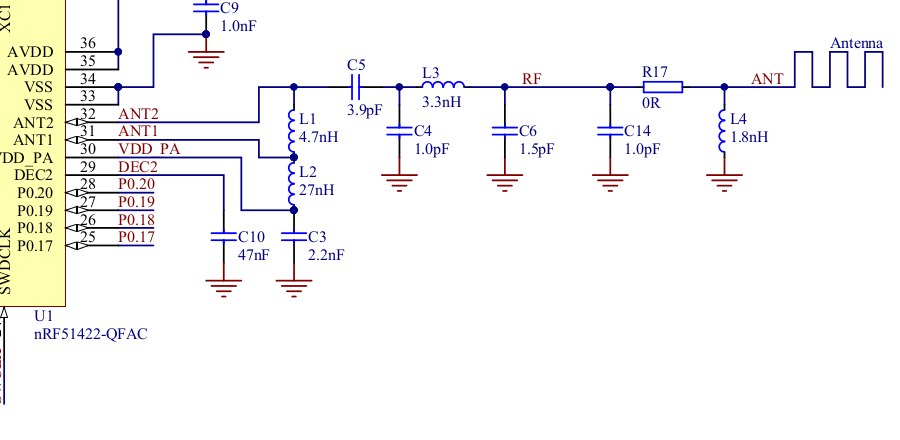Our BLE product uses a meander PCB antenna similar to PCA10031. It works actually quite fine, but a question pops up when it comes to tuning.
Antenna matching design in the PCA10031 module looks a bit strange.

I do not fully understand the idea of having C14 in parallel with L4. At 2.4 GHz these two could be replaced by an equivalent ~3 nH shunt. Why it was designed so? Does it (maybe) have something with extra filtration of 4.8 GHz harmonic or some other things I do not grokk?


